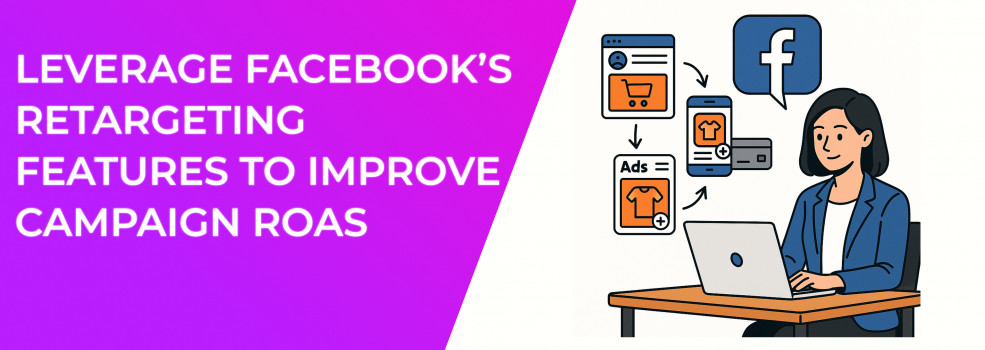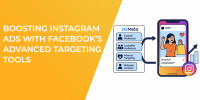Getting strangers to click is expensive. Turning people who have already shown interest into buyers is where the real margin hides. Meta gives advertisers a robust toolkit for retargeting audience Facebook ads and the better you master it, the higher your return on ad spend will climb. In this guide you will learn how to blend custom audience Facebook ads, lookalike audience Facebook ads, and finely tuned Facebook ad targeting so every dollar works harder. You will also find two quick-reference lists to accelerate execution and creative quality.
1. Lay the Technical Groundwork
Before you touch budgets or creative, confirm that your tracking stack is watertight. A correctly configured Meta Pixel working alongside the Conversions API captures both browser-side and server-side events, giving you the data foundation required to build large, accurate Facebook ads custom audiences. Double-check that you are passing back email, phone number, and first-party IDs; these match keys supercharge every future Facebook ad audience you create. Spending ten minutes validating events now will save you weeks of troubleshooting later.
If you're just getting started with remarketing, make sure you first understand the full setup process by reviewing this step-by-step guide to Facebook retargeting.
Quick Implementation Checklist
Use this numbered list as a zero-to-launch snapshot. Each step references the most relevant Facebook ad audience keyword so you can cross-check setup without digging through documentation.
-
Install and verify the Meta Pixel in Events Manager
-
Enable Conversions API via partner integration or manual server key
-
Map standard events (
ViewContent,AddToCart,Purchase) for accurate Facebook ad targeting -
Pass advanced matching fields to improve custom audience Facebook ads size
-
Confirm event deduplication to avoid inflated numbers
-
Create baseline custom audiences for website visitors, purchasers, and video watchers
After you run this list, open Ads Manager’s Diagnostics tab and clear any warnings. Only then should you move on.
2. Segment a Truly Warm Audience
People who visited yesterday are not the same as those who visited three months ago. Split your traffic into time-based buckets so messaging and frequency match intent. A tight warm audience Facebook ads window of 1–30 days is ideal for cart reminders or limited-time offers, while 31–180-day visitors respond better to social proof and new-season launches. Adding this nuance immediately improves click-through rate and keeps frequency under control.
For a full-funnel approach that connects top-of-funnel discovery with bottom-of-funnel retargeting, explore this detailed Facebook ads funnel strategy guide.
3. Build High-Intent Custom Audiences
Creating multiple Facebook ads retargeting segments lets you tailor creative, bids, and exclusions at a granular level. It also feeds Meta’s algorithm richer signals, producing stronger optimisation over time. Read the context below so you understand why each entry matters, then refer to the table for a practical starting framework.
Once you launch these audiences, exclude recent purchasers so your spend does not cannibalise profit. Layer demographic filters such as age or household income to sharpen efficiency, and refresh creative every two to four weeks to prevent fatigue. Treat this table as a living template; swap events or adjust lookback windows as your funnel evolves.
4. Expand Reach With Lookalike Audiences
After retargeting stabilises, feed your best segments into a lookalike model. Starting with a 1 percent lookalike audience Facebook ads built from your highest-LTV buyers usually delivers the cheapest conversions. When you need volume, test wider (3–5 percent) but watch incremental ROAS to ensure you are not just buying cheap clicks. Combining lookalikes with Facebook ad interest targeting, like “Eco-conscious shoppers” or “Fitness enthusiasts”, keeps relevance high when you push into broader percentages.
To better understand the differences and when to use each audience type, read this comparison of custom vs lookalike audiences on Facebook.
5. Make Smart Placement and Creative Calls
Not every placement deserves your budget. Audience Network Facebook ads impressions are cheap, but monitor placement-level ROAS and cut anything that drags the average down. For catalog products, switch on Dynamic Product Ads so Meta automatically shows each shopper the exact item they browsed. Service or SaaS offers benefit from short-form video testimonials or lo-fi founder messages that feel native to Reels. Always run at least two formats in every ad set; giving the algorithm options lets it locate the cheapest path to conversion faster.
Creative Dos and Don’ts
Before you upload a single asset, skim this bullet list to dodge the most common production mistakes and maximise impact of your Facebook ad targeting strategy.
-
Do feature the product in the first three seconds of video for stronger retention
-
Do add captions to Reels so silent autoplay still delivers the entire message
-
Do match creative style to audience stage: testimonials for warm traffic, feature demos for colder lookalikes
-
Don’t recycle cold-traffic banners for cart-abandoner campaigns—tailor urgency and social proof
-
Don’t cram more than one CTA per creative; clarity beats cleverness
-
Don’t forget to test square versus vertical formats in the same ad set to let placement preference emerge
Keep it clear: ad creative that matches the audience’s intent consistently performs better.
Use the list as a pulse-check each time you brief designers or content creators.
6. Optimise Bids, Budgets, and Frequency
When an ad set has at least fifty conversions, activate target ROAS Facebook ads bidding. Start with a target 10–20 percent below your historical average, then walk the goal up once daily budget is consistently spent. Keep the daily reach-to-frequency ratio under 1.5 inside a seven-day window so you do not annoy prospects. For retargeting cohorts that need tight control, stay with ad-set budgets; move to CBO only after learning is complete. Pause edits for seventy-two hours after major changes so the system can relearn accurately.
One of the biggest killers of retargeting ROAS is creative burnout — learn how to detect and fix Facebook ad fatigue before your results crash.
7. Prove Incremental Lift
ROAS is a helpful headline metric, but retargeting often converts customers who might have come back organically. Use holdout tests or post-purchase attribution surveys to confirm true lift. A blended CAC view that combines prospecting and retargeting spend prevents double-counting revenue and keeps decision-making honest.
If your retargeting campaigns aren’t delivering results, here’s a resource that outlines what to check when Facebook ads aren't converting.
8. Common Pitfalls to Avoid and How to Fix Them
Avoid overlapping audiences by checking the Overlap tool; anything above 20 percent is wasteful. Too much audience overlap can stall campaign performance, this breakdown of Facebook audience overlap explains why and how to manage it.
Do not recycle cold-traffic creative for hot cart-abandoners.
Finally, match your attribution window to the buying cycle; mid-ticket e-commerce generally performs best on a seven-day click, one-day view window.
Bringing It All Together
When set up correctly, a full-funnel mix of custom audience Facebook ads, lookalike audience Facebook ads, and disciplined Facebook ad targeting strategy can deliver three to ten times the ROAS of pure prospecting. The roadmap is simple: verify Pixel and CAPI events, build segmented warm audiences, layer lookalikes for scale, and optimise with target ROAS bidding once data matures. Return to your data regularly, refine segments, and refresh creative. By committing to continuous improvement you will keep your campaigns profitable long after the quick wins are gone.

